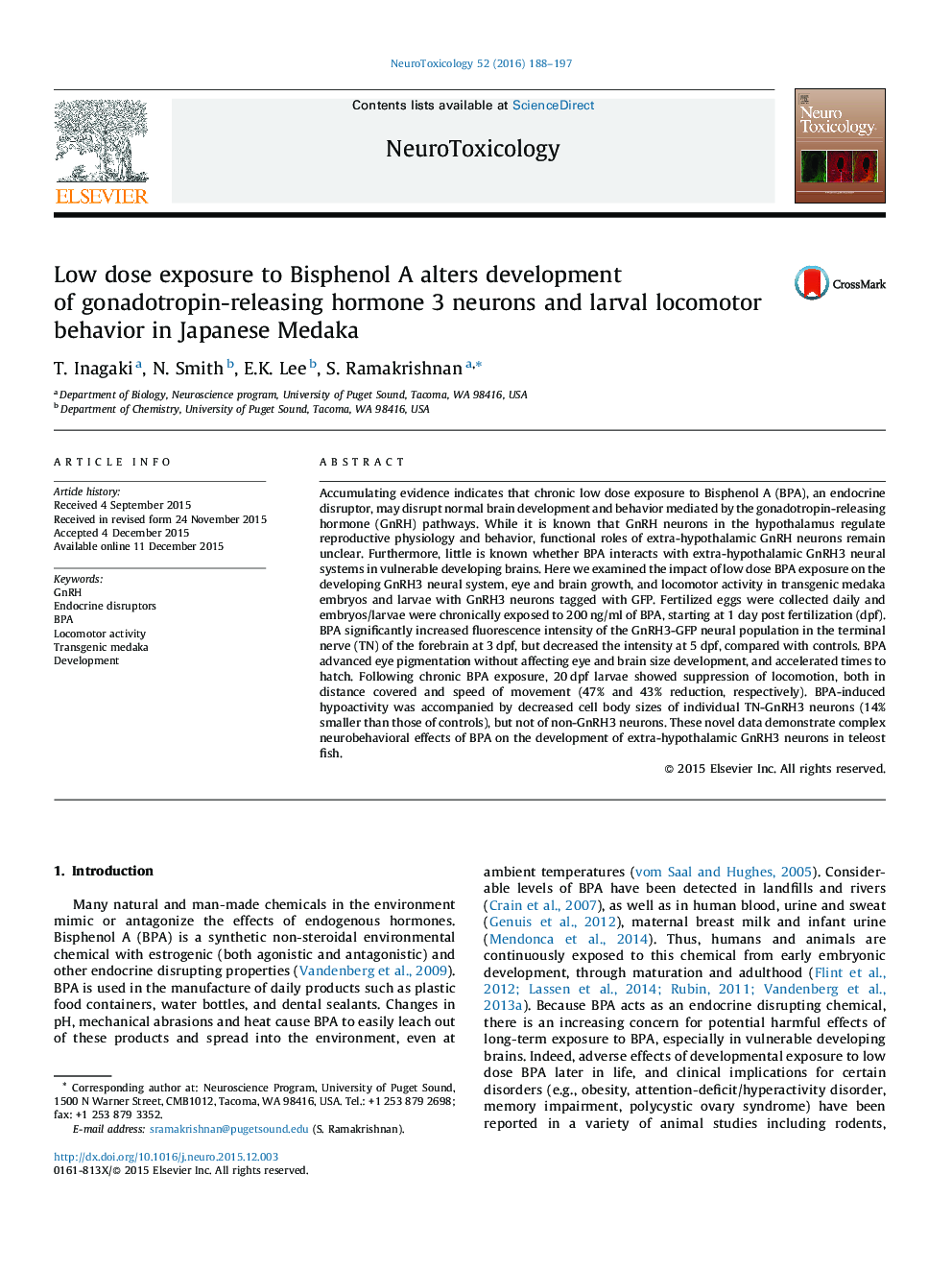| Article ID | Journal | Published Year | Pages | File Type |
|---|---|---|---|---|
| 5854686 | NeuroToxicology | 2016 | 10 Pages |
Accumulating evidence indicates that chronic low dose exposure to Bisphenol A (BPA), an endocrine disruptor, may disrupt normal brain development and behavior mediated by the gonadotropin-releasing hormone (GnRH) pathways. While it is known that GnRH neurons in the hypothalamus regulate reproductive physiology and behavior, functional roles of extra-hypothalamic GnRH neurons remain unclear. Furthermore, little is known whether BPA interacts with extra-hypothalamic GnRH3 neural systems in vulnerable developing brains. Here we examined the impact of low dose BPA exposure on the developing GnRH3 neural system, eye and brain growth, and locomotor activity in transgenic medaka embryos and larvae with GnRH3 neurons tagged with GFP. Fertilized eggs were collected daily and embryos/larvae were chronically exposed to 200Â ng/ml of BPA, starting at 1 day post fertilization (dpf). BPA significantly increased fluorescence intensity of the GnRH3-GFP neural population in the terminal nerve (TN) of the forebrain at 3Â dpf, but decreased the intensity at 5Â dpf, compared with controls. BPA advanced eye pigmentation without affecting eye and brain size development, and accelerated times to hatch. Following chronic BPA exposure, 20Â dpf larvae showed suppression of locomotion, both in distance covered and speed of movement (47% and 43% reduction, respectively). BPA-induced hypoactivity was accompanied by decreased cell body sizes of individual TN-GnRH3 neurons (14% smaller than those of controls), but not of non-GnRH3 neurons. These novel data demonstrate complex neurobehavioral effects of BPA on the development of extra-hypothalamic GnRH3 neurons in teleost fish.
